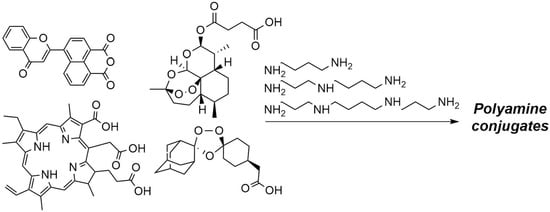Recent Advances in the Synthesis of Polyamine Derivatives and Their Applications
Abstract
Share and Cite
Nichugovskiy, A.; Tron, G.C.; Maslov, M. Recent Advances in the Synthesis of Polyamine Derivatives and Their Applications. Molecules 2021, 26, 6579. https://doi.org/10.3390/molecules26216579
Nichugovskiy A, Tron GC, Maslov M. Recent Advances in the Synthesis of Polyamine Derivatives and Their Applications. Molecules. 2021; 26(21):6579. https://doi.org/10.3390/molecules26216579
Chicago/Turabian StyleNichugovskiy, Artemiy, Gian Cesare Tron, and Mikhail Maslov. 2021. "Recent Advances in the Synthesis of Polyamine Derivatives and Their Applications" Molecules 26, no. 21: 6579. https://doi.org/10.3390/molecules26216579
APA StyleNichugovskiy, A., Tron, G. C., & Maslov, M. (2021). Recent Advances in the Synthesis of Polyamine Derivatives and Their Applications. Molecules, 26(21), 6579. https://doi.org/10.3390/molecules26216579








